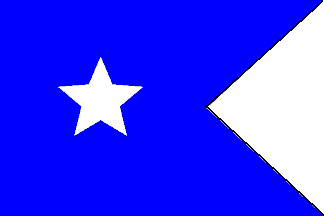|
Lauro
Lines (Est. 1912) |
|
|
| RETURN TO THE LOBBY
THE OCEAN LINER VIRTUAL MUSEUM |
|
Lauro Lines: Achille
Lauro inherited his first ships in 1912, and built up a substantial
fleet of freighters before the Second World War. After the wawr he
ventured into the emigrant market, with the converted freighters
Ravello, Olimpia and Napoli. These were very basic conversions , and
still largely retained a freighter appearance. His first actual
passenger ship was the Surriento, an ex-Grace Line passenger ship
bought in 1949. During the 1950s, Achille Lauro was a multi
millionaire, known as the "King of Naples", and owner of a fleet of 50
ships. The Napoli
entered service in 1948 between Mediterranean and Australia, changing
to the South American route in 1951. She was converted back to a
freighter in 1960 and was scrapped in 1971. By the 1970s the empire was falling apart and it was managed by his son Ercole Lauro. The line collapsed in 1980, followed two years later by the death of its founder. StarLauro Cruises: Lauro
Lines was sold to the Geneva based Mediterranean Shipping Company in
1987 and renamed as StarLauro Cruises. The Mediterranean Shipping
Company (MSC) was founded in 1970 by Captain Gianluigi Aponte when he
bought his first ship. Since then the shipping line has grown from
being a small regular ship operator to become one of the world's
largest shipping lines. MSC Italian Cruises was created as a subsidiary
in 1988 after the company purchased Lauro Lines. The corporate
headquarters of MSC is based in Geneva, Switzerland. Mediterranean Shipping Cruises (MSC):
In 1995
StarLauro Cruises was renamed Mediterranean Shipping Cruises (MSC) and
restyled to distance itself from the Achille Lauro disaster. As a
result the Lauro brand disappeared forever due to mergers in the
shipping industry and globalisation. But more recently it has styled itself as MSC Italian Cruises (MSC Crociere Italiane S.A.). In 1997, MSC Cruises signed an order for the construction of two new ships with a capacity of around 2000 passengers, MSC Lirica and MSC Opera, respectively inaugurated in April 2003 and June 2004 by Sophia Loren. MSC Italian Cruises: With the introduction of the first new MSC ship in 2003, the company took yet another strategic step: creating a new logo. The MSC acronym, inserted at the centre of wind rose, symbolises the central role that the guest plays in the world of MSC Cruises. On the other hand, the wind rose represents the diverse horizons towards which the company has projected itself in order to reach the objectives set for the next few years. MSC Cruises is making its significant mark on the market, with an increasingly competitive fleet offering a wide range of itineraries and products in the best all-Italian tradition of hospitality and quality services. In the space of a few years the company has grown considerably, becoming known the world over as the only Italian cruise company able to meet the needs of those who wish to travel “Italian-style”, without renouncing on a touch of internationality. Indeed, an all-Italian style has always been the distinguishing feature of the MSC Cruises fleet, in terms of hospitality, furnishings, design, cuisine, atmosphere and a careful eye to its guests – perfect expressions of Italian refinement, and ideal ingredients for a unique cruise. As of March 2008 MSC Italian Cruises is the third-largest cruise operator in the world, after Carnival Corporation & PLC and Royal Caribbean International MSC - Mediterranean Shipping Company S.A.http://www.mscgva.ch MSC Italian Cruises S.A. http://www.msccruises.com
|
